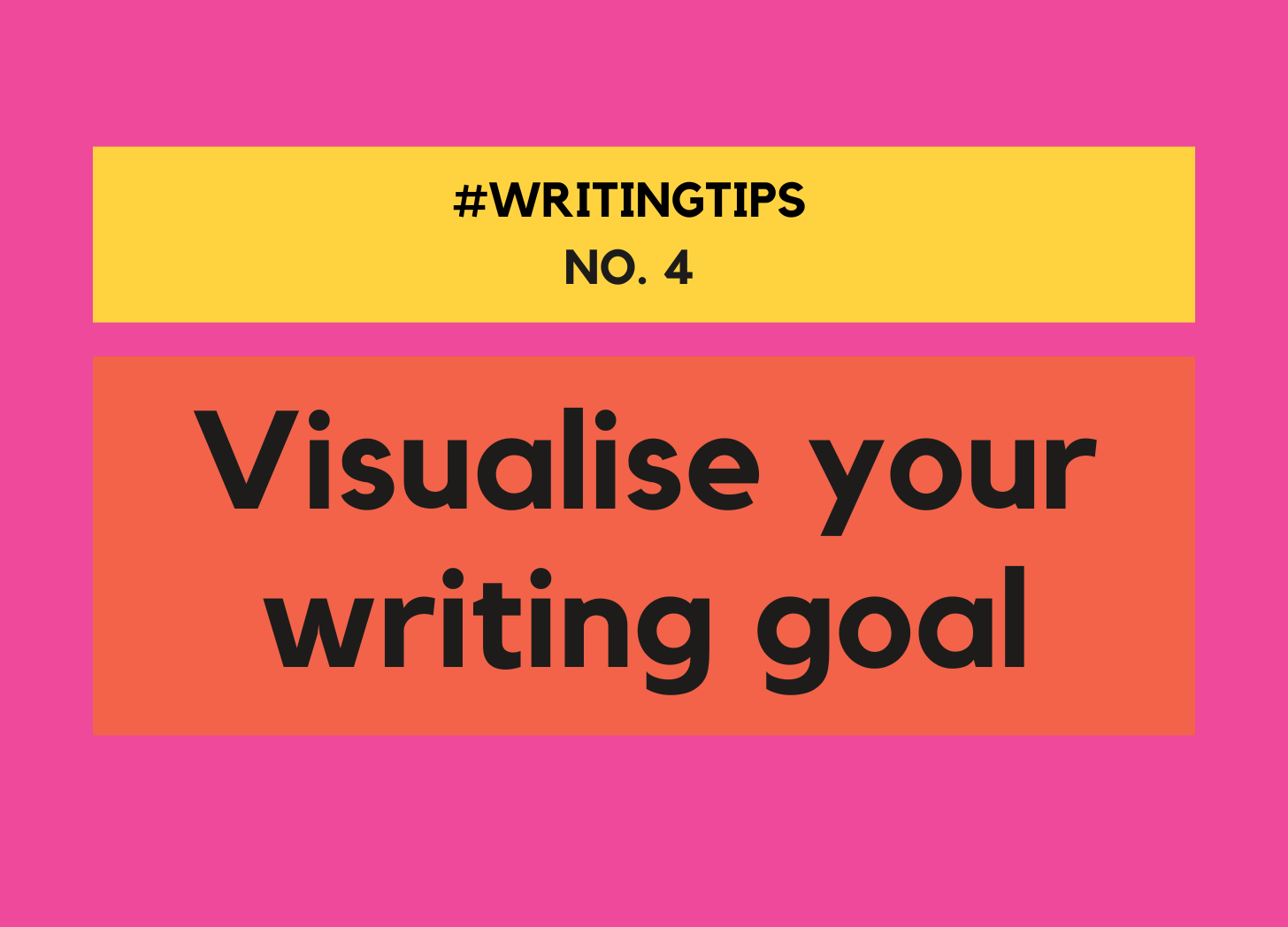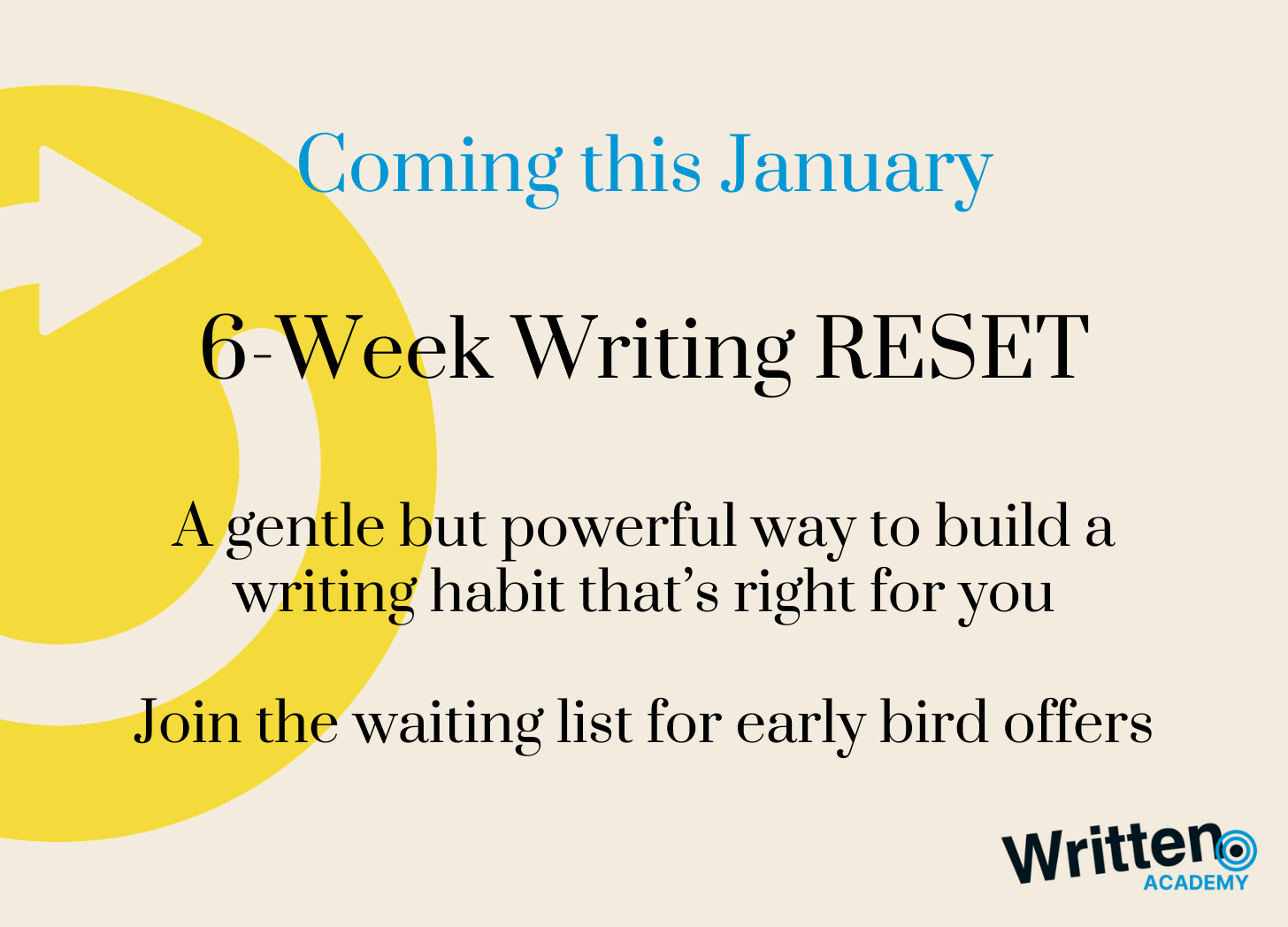Tip 4: Visualise your writing goal
The first step in setting a goal is to dream big - here's how.
We kicked off our latest 6-Week Writing RESET course with a goal-setting exercise. The first thing we get people to do is to consider their endpoint.
How will finishing make you feel?
Doing positive visualisations can sometimes feel a bit woo-woo, but this practice is used across lots of different fields, from sports to business. It’s a great way to get off the starting blocks and help you to increase focus, enhance motivation and even performance.
Get started with goal visualisation
Ideally, you’ll be in a quiet, relaxing environment. Where ever you are right now, check in how you feel physically, sitting in your chair or at your desk – scan your your body from your shoulders and back, your rear in the seat, your feet on the ground. Perhaps you might like to close your eyes and take a couple of deep breaths.
All good? Okay, then let’s go.
1. Get clarity on your dream
The first step is to time travel to a year from now. Imagine you have achieved your dearest writing wish. What is it? Be specific.
Think about how achieving this goal would look, feel, and sound. Imagine the smallest details. What will happen as a result? What opportunities will come – personally, professionally? What will you tell people; what will they say to you?
2. Engage your senses
Involve all your senses in the visualisation. What do you see? Hear? Feel? Smell? Taste? For example, if your goal is to finish writing a book, imagine the feeling of typing the last word, the sound of the keyboard, the sight of the completed manuscript, the smell of the pages, and even the taste of the celebratory drink you might have afterward.
3. Think positive
Focus on the positive emotions you’ll feel once the goal is achieved—pride, joy, relief, excitement. Let these wash over you and amplify them in your mind.
4. Don’t judge or edit
Let your imagination go wild in this ‘mental rehearsal’, freewrite, list, mind map, draw, or get creative and create a vision board. Don’t judge your dream; the time for editing and adjustment will come.
5. End Positively
Lastly, reaffirm your commitment to your goal. Note down any insights, ideas, or motivations that came up, perhaps by writing an affirmation or a pep talk such as ‘I am capable of achieving…’
6. Repeat!
Visualisation is a skill that improves with practice. Over time, you'll find it easier to create vivid, detailed, and emotionally charged visualisations that can significantly boost your motivation and progress towards your goals.
Visualise - but don’t just visualise
While dreaming big is a great way to up your motivation, visualising needs to be paired with action.
Tired of never finishing?
If you want a writing habit that lasts in 2024, sign up to our January RESET course - a 6 week coaching programme that helps you finish what you start. Early bird offers available when you join the waiting list.








This is SUCH a great tool to allow us access to the possibility of our creativity. I love it! I think the key thing, as you so rightly point out, is that after the vision we need to act to put in motion what we've visualised. Thanks for sharing. Such a useful post.
I love this. There was a visualisation exercise in the London Writers Salon goal setting session last week & it threw up something v interesting & unexpected which I’ve filed away to ponder!